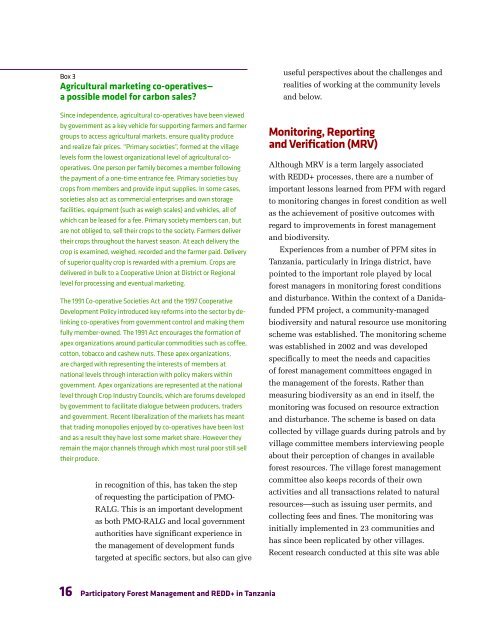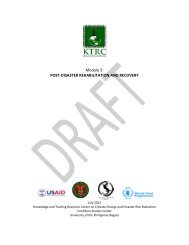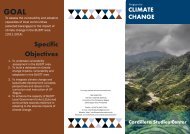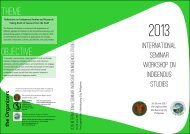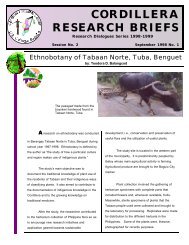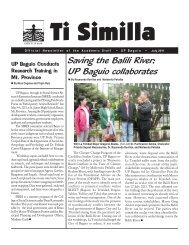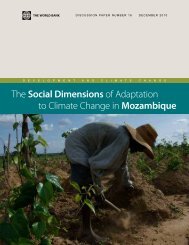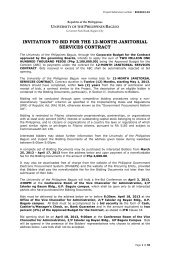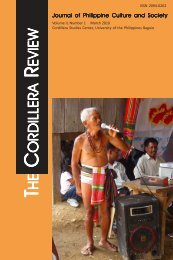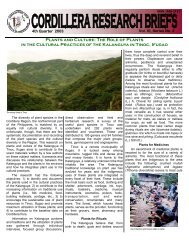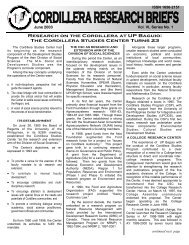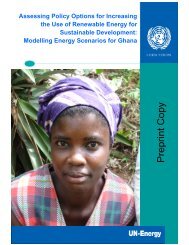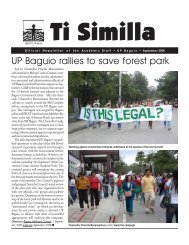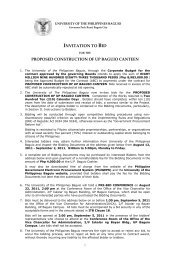Tanzania Report
Tanzania Report
Tanzania Report
You also want an ePaper? Increase the reach of your titles
YUMPU automatically turns print PDFs into web optimized ePapers that Google loves.
Box 3<br />
Agricultural marketing co-operatives—<br />
a possible model for carbon sales<br />
Since independence, agricultural co-operatives have been viewed<br />
by government as a key vehicle for supporting farmers and farmer<br />
groups to access agricultural markets, ensure quality produce<br />
and realize fair prices. “Primary societies”, formed at the village<br />
levels form the lowest organizational level of agricultural cooperatives.<br />
One person per family becomes a member following<br />
the payment of a one-time entrance fee. Primary societies buy<br />
crops from members and provide input supplies. In some cases,<br />
societies also act as commercial enterprises and own storage<br />
facilities, equipment (such as weigh scales) and vehicles, all of<br />
which can be leased for a fee. Primary society members can, but<br />
are not obliged to, sell their crops to the society. Farmers deliver<br />
their crops throughout the harvest season. At each delivery the<br />
crop is examined, weighed, recorded and the farmer paid. Delivery<br />
of superior quality crop is rewarded with a premium. Crops are<br />
delivered in bulk to a Cooperative Union at District or Regional<br />
level for processing and eventual marketing.<br />
The 1991 Co-operative Societies Act and the 1997 Cooperative<br />
Development Policy introduced key reforms into the sector by delinking<br />
co-operatives from government control and making them<br />
fully member-owned. The 1991 Act encourages the formation of<br />
apex organizations around particular commodities such as cofee,<br />
cotton, tobacco and cashew nuts. These apex organizations,<br />
are charged with representing the interests of members at<br />
national levels through interaction with policy makers within<br />
government. Apex organizations are represented at the national<br />
level through Crop Industry Councils, which are forums developed<br />
by government to facilitate dialogue between producers, traders<br />
and government. Recent liberalization of the markets has meant<br />
that trading monopolies enjoyed by co-operatives have been lost<br />
and as a result they have lost some market share. However they<br />
remain the major channels through which most rural poor still sell<br />
their produce.<br />
in recognition of this, has taken the step<br />
of requesting the participation of PMO-<br />
RALG. This is an important development<br />
as both PMO-RALG and local government<br />
authorities have significant experience in<br />
the management of development funds<br />
targeted at specific sectors, but also can give<br />
useful perspectives about the challenges and<br />
realities of working at the community levels<br />
and below.<br />
Monitoring, <strong>Report</strong>ing<br />
and Verification (MRV)<br />
Although MRV is a term largely associated<br />
with REDD+ processes, there are a number of<br />
important lessons learned from PFM with regard<br />
to monitoring changes in forest condition as well<br />
as the achievement of positive outcomes with<br />
regard to improvements in forest management<br />
and biodiversity.<br />
Experiences from a number of PFM sites in<br />
<strong>Tanzania</strong>, particularly in Iringa district, have<br />
pointed to the important role played by local<br />
forest managers in monitoring forest conditions<br />
and disturbance. Within the context of a Danidafunded<br />
PFM project, a community-managed<br />
biodiversity and natural resource use monitoring<br />
scheme was established. The monitoring scheme<br />
was established in 2002 and was developed<br />
specifically to meet the needs and capacities<br />
of forest management committees engaged in<br />
the management of the forests. Rather than<br />
measuring biodiversity as an end in itself, the<br />
monitoring was focused on resource extraction<br />
and disturbance. The scheme is based on data<br />
collected by village guards during patrols and by<br />
village committee members interviewing people<br />
about their perception of changes in available<br />
forest resources. The village forest management<br />
committee also keeps records of their own<br />
activities and all transactions related to natural<br />
resources––such as issuing user permits, and<br />
collecting fees and fines. The monitoring was<br />
initially implemented in 23 communities and<br />
has since been replicated by other villages.<br />
Recent research conducted at this site was able<br />
16<br />
Participatory Forest Management and REDD+ in <strong>Tanzania</strong>


